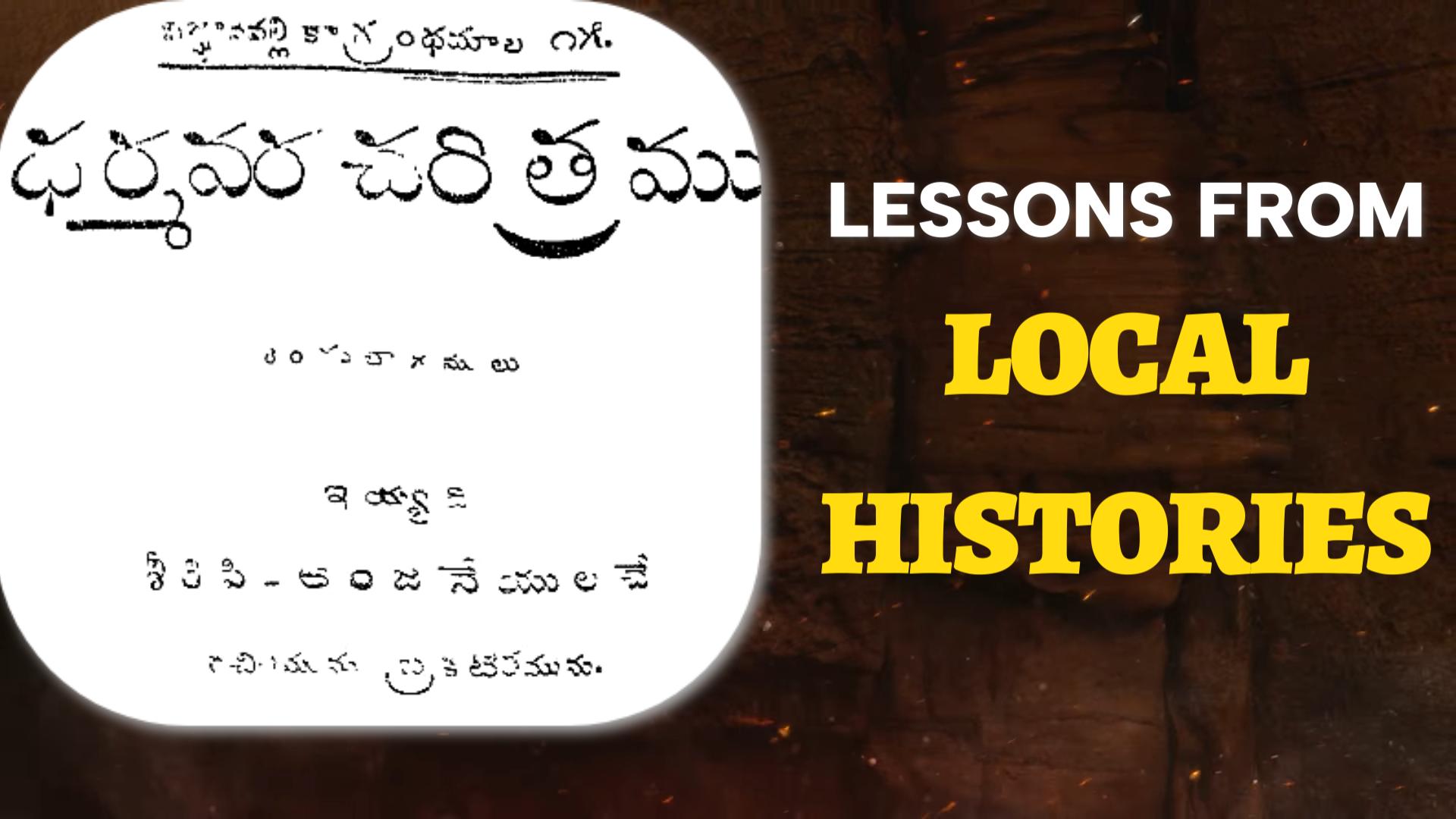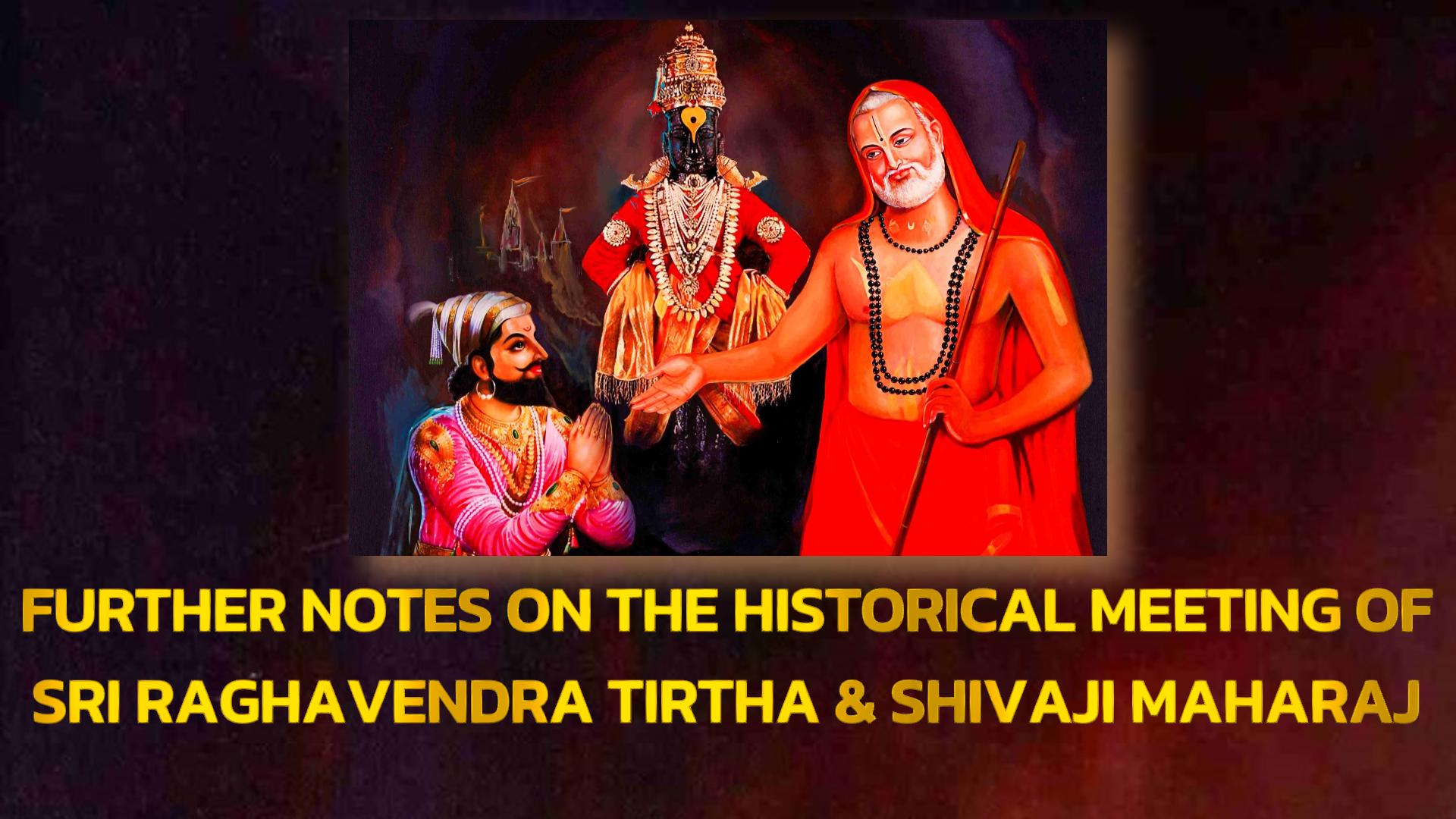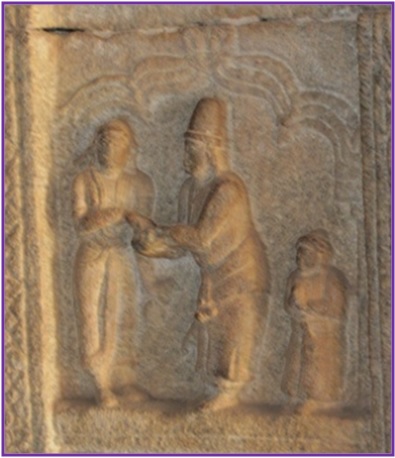A BRIEF NOTE ON THE TITLE ‘SRIPADARAYA’
INTRODUCTION
In the absence of a clinical approach towards history, fables rule the root and distort the truth. Who gave the title Sripadaraya to Sri Lakshmi Narayana Tirtha is also one such case in point that must be studied properly.
This topic needs an impartial examination of the available information because Sadhu Subrahmanya Sastri, a noted epigraphist of Tirumala Tirupati Devasthanams, raised doubts about both Sri Sripadaraya and Sri Vyasatirtha. He questioned the veracity of Madhva anecdotes about Sri Sripadaraya and Sri Vyasatirtha. He also dismissed the Madhva narratives as mere stories.
That being the ground reality, what should we Madhvas do? Should we keep repeating the fables that have no verified sources? Or should we explore the deep oceans of history to fathom out the truth?
THE BEGINNING OF THE EXPLORATION:
In the introduction to Vyasayogi Charitam, a biography of Sri Vyasatirtha, its writer Mr. Venkoba Rao gives the period during which Sri Vyasatirtha worshipped Tirumala Srinivasa. According to Mr. Rao Sri Vyasatirtha, the disciple of Sri Sripadaraya, stayed at Tirumala between c.1486 to c.1498 to oversee the temple management of Sri Srinivasa.
This anecdote and an inscription from a remote village in Andhra Pradesh lead us to arrive at a factual conclusion as to who gave the title Sripadaraya to Sri Lakshmi Narayana Tirtha of Mulbagal.
Before commencing our exploration, let us list out some moot questions:
- How Lakshminarayana
Tirtha became ‘Sripadaraya’? - Whether this title got to do something
with our present pursuit of dismissing the doubts raised by Sadhu
Subrahmanya Sastry on Maadhva narratives of Sripadaraya and Vyasaraya? - Is it possible that Lakshmi Narayana Tirtha could have been called as Sripadaraya by general public?
- If Sripadaraya was well known to the public and the emperor, what were the reasons?
Let us begin the exploration.
****
“Was Sripadaraya unknown and not so popular with kings and commoners?’
This is a pretty archetypal question that attracts different answers from different quarters.
Dvaitins say “Oh! Yeah! He was pretty much known to everyone in the world!” and Advaitins say “He was oblivious to the public and royals as compared to our Gurus!”
So, instead of falling prey to rhetoric let me first put forward the proof.

(taken from Maadhva Mathada Shashanagalu, Published by SRS Matha, Mantralaya)
Here an inscription from late 15th century (1496 AD) that was issued by Devapa who was a temple manager/trustee of Narasimhadeva temple to one Alapa. This inscription talks about the digging of a water tank. This inscription was been found in a Venkateshwara temple located in Kurijili village, Punganur Taluk, Chittoor Dist of Andhra Pradesh.
The most intriguing part of this inscription and be found in the last portion of it which reads as below:

(Madhva Mathada Shashanagalu, Published by SRS Matha, Mantralaya)
The donor of the issuer of this grant has taken an oath on the lotus feet of “ಮುಳವಾಗಿಲ ಕಲಮಠದ ಲಕ್ಷ್ಮೀನಾರಾಯಣ ತೀರ್ಥ ಶ್ರೀಪಾದವೊಡೆಯರು” which is an unmistakable points towards Sri Sripadaraya of Mulbagal Matha.
Before we proceed to get few more ruminations on this inscription, here is an online version of this inscription from an external source.
General intro to the inscription
The appearance of the name of Sri Lakshminarayana Tirtha:
This online version will definitely remove doubts that the inscription quoted from Sri Raghavendra Swamy Matha’s book could have been a ‘creation’ by Madhvas.
Thus having establishing the authenticity of the inscription, let us proceed to explore the said inscription further.
- Going by the timeline of Sri Sripadaraya (1404-1502), it can be understood that the inscription was issued six years before the Brindavana pravesha of Sripadaraya.
- At the time of writing this inscription, Sri Sripadaraya was 92 years of age.
- It becomes clear that the general public of those times knew Sri Sripadaraya well and he was being respected and revered by one and all.
There is an important inference drawn from this inscription and that is – that Sri Sripadaraya has been addressed by the pontifical name (Ashrama Nama) i.e. Lakshmi Narayana Tirtha. The additional prefix of “Sripada Odeyar” at the end of his name is synonymous to ‘Sripadaraya’ title what we are exploring now. Hence this inscription is crucial and it speaks volumes about the popularity of Sri Sripadaraja Tirtha and also the factual history associated with the title (Sripadaraya).
With the help of this crucial Kurijili village inscription, it can be concludeded that Sripadaraya was popular and the residents of a remove village have taken an oath on his lotus feet.
WHO GAVE THE TITLE SRIPADARAYA?
Now, dealing with the aspect – whether Sripadaraya was known to the emperor i.e. Saluva Narasimharaya becomes important in unveiling the answer to the question – ‘who gave the title Sripadaraya?’
This part of exploration is critical for two reasons.
1) that it can refute the observations of Sadhu Subrahmanya Sastri who dismissed the legends of Sripadaraya and Sri Vyasatirtha as mere stories.
2) that it can separate the fable from the fact as to who gave the title Sripadaraya to Sri Lakshmi Narayana Tirtha.
So let us revisit the question again – “Did Saluva Narasimha know Sripadaraya and did he honour the saint as claimed in Madhva legends?”
It must be noted here that, like in the case of Vyasatirtha and Krishnaraya, there are no concrete evidences such as inscriptions to confirm the relationship between Sripadaraya and Saluva Narasimha. Hence it requires an unconventional method which I call as ‘reading-between-the-lines method.’
By using my method to examine the Kurijili village inscription, it can be understood that Sripadaraya who was quite popular among the masses must also be known to the rulers of the land. So, it won’t be a false premise to assume that Saluva Narasimha was aware of Sri Sripadaraya.
Another fact is that Saluva Narasimha acted as Governor of Chandragiri Rajya
and he was operating from Chandragiri town near Tirupati. This Chandragiri is approximately 150 KMs (as per
modern driving distance) from Mulbagal. Back then also 150 kms wasn’t a distance that can’t be traveled!
Interesting and incidentally, in those days Mulbagal is considered as the gateway to the holy town of Tirupati. Pilgrims coming from various parts of Karnataka have to pass through Mulbagal to enter the precincts of Tirupati kshetra. The name “Mulabagal” is
a corrupt version of “ಮೂಡಲ ಬಾಗಿಲು”
i.e. Eastern Gateway to Tirumala Kshetra.
Thus, a saint who is an erudite scholar and also popular with masses and who was stationed at an important place that connected a great Empire to a great pilgrim destination can never be ignored by the rulers particularly those who are governing places closer to Mulbagal. Hence, it can be said without any doubt that Saluva Narasimha knew Sripadaraya well.
There are certain direct and irrefutable evidences such as Sripadaraya’s devotional songs in Kannada language which made him to become a household name. Devotional songs on Sri Venkateshwara written by Sripadaraya serve as testimonies to the frequent trips made by him to Tirumala.
If we go by the ancient routes that existed long before Vijayanagara Empire, travelers from the parts of the then Karnataka must pass through Chandragiri to reach Tirumala via Mulbagal. This fact provides us with an irrefutable evidence that a celebrated saint such as Sripadaraya won’t pass through the regional capital without being honoured by the ruler.
All these facts ably supported by the general history affirm that Saluva Narasimha knew Sripadaraya well and the latter was honoured by the former from time to time. It is at this juncture that the eulogies of Sripadaraya composed by Sri Vyasatirtha and Sri Vijayindra would shed the tag of ‘fables’ and become solid ‘facts.’
*****
SRIPADARAYA TITLE – FINAL STAGE OF EXPLORATION
Now let us explore the critical question – “who gave the title Sripadaraya to Lakshminarayana Tirtha?”.
Among Maadhvas, a legend is in vogue that Sri Raghunatha Tirtha, a pontiff of Uttaradi Matha, has conferred this title on Lakshmi Narayana Tirtha as a token of his appreciation towards the latter.
But this story is not accepted by one and all. Many scholars of the yore have debated and the issue has not got common consensus yet.
This present exploration too may not bring in the much needed agreement between believers of Sri Raghunatha Tirtha’s story and
those who oppose the story. Nevertheless, this exploration is a sort of loud thinking that may be read and thought about by the genuine seekrs.
There are few but strong challenges that arise from the story of Sri Raghunatha Tirtha bestowing the title and they are as below:
- The timelines of both the saints do not match.
- There are no solid, undisputed evidences for the said story and the sources of the story originate from Uttaradi Matha only.
- The writings of some followers of Uttaradi Matha that narrate the said story are again contradictory to each other.
- The Sripadaraja Stotra composed by Sri Sridhara Tirtha that talks about a close association between Sri Raghunatha Tirtha and Sripadaraya is considered as a corrupted version manipulated by someone recently .
It is up to the scholars of Uttaradi Matha to examine the above challenges unambiguously and come out with suitable answers. For now, the above challenges to the version held by Uttaradi Matha call for a fresh look at the question on hand.
In this part, let us go through some solid evidences such as iconography and contemporary literature of Sripadaraya’s time.
First let us analyse the following stone carving found on an old pillar of Sripadaraja Matha located in Mulbagal town.

This carving is of Sripadaraya in sitting posture (ardha padmasana), showing Jnanamudraand holding Dandakashtha. It is also showing the ‘earrings’ wore by Sripadaraya. This reminds of the song written by Vyasatirtha i.e. “ಮಹಿಮೆ ಸಾಲದೆ ಇಷ್ಟೆ ಮಹಿಮೆ ಸಾಲದೆ”
In the said kirtana, Sri Vyasatirtha narrates that his Guru Sri Sripadaraya was seen in the guise of a king. He writes -“ಮುತ್ತಿನಕವಚ ಮೇಲ್ಕುಲಾವಿ ನವರತ್ನಕೆತ್ತಿದ ಕರ್ಣಕುಂಡಲ” and also that his Guru was having applied “ಕಸ್ತೂರಿತಿಲಕ ಶ್ರೀಗಂಧಲೇಪನ.”
The above shown image is displaying (1) the breastplate made with pearls; (2) a royal headgear and (3) earrings studded with precious stones.
Thus the archaeological evidence and the literary evidences affirm that it was Sri Vyasatirtha was the first one to record the name ‘Sripadaraya’ in his Kannada and Samskruta compositions
gives raise to a question as to “Who could have given those royal ornaments to Sri Lakshminarayana Tirtha that earned the title Sripadaraya for him?”
According to UM’s legend, Sri Raghunatha Tirtha gave the title only. The said legend doesn’t speak about offering the royal ornaments that are shown in the iconography of Sripadaraya found at Mulbagal.
If it is to be assumed that the UM’s legend skipped or ignored who gave the ornaments to Lakshminarayana Tirtha. Hence the said story is only a partial but not a complete account of the history associated with the title “Sripadaraja.”
Also another moot question that arises here is – “whether a sanysin (Raghunatha Tirtha) offer royal insignia such as the crown and ear rings to another sanysin (Lakshminarayana Tirtha)?” The answer would be a big NO. Hence, it can argued, that UM’s story doesn’t speak about the ornaments part but only on the title part. But the title “Sripadaraja” has got its expression in the form of a stone image carved on a pillar of Sripadaraja Matha at Mulbagal that displays Lakshminarayana Tirtharu donning signs of royalty such as crown, earrings etc.
If the UM’s legend is the historical fact then the stone image of Lakshminarayana Tirtharu at Mulbagal Matha must have shown Raghunatha Tirtharu as well. But we can see that there is only an image of Lakshminarayana Tirtharu on that pillar in sitting posture in kingly attire. So, why did the people who caused this iconography some 300 years ago have foregone the UM’s legend? May be, they weren’t aware of such story or may not be believing the story.
In order to get to the factual history, it must be searched whether any literary evidences available that match with the iconography of Lakshminarayana Tirtharu.
1. First one that comes to mind is that Kannada kriti written by Sri Vyasatirtha “ಮಹಿಮೆ ಸಾಲದೆ ಇಷ್ಟೆ ಮಹಿಮೆ ಸಾಲದೆ” and also the stotra composed in Samskruta.
2. Second one is the shloka from Sripadaraja stuti by Sri Vijayindra Tirtha.
3. Third one that may not have a direct reference but enough pointers is the stuti written by Sri Vadiraja Tirtha.
We have to go the ascending order i.e. from 3rd source to the 1st source to get complete picture of the life of Lakshminarayana Tirtharu.
Sri Vadiraja, in his Sripadaraja Ashtaka, describes the various accomplishments of Sripadarajaru including his fabled victory over a great Kapalika scholar. This stuti helps us in understanding the reach of Sripadarajaru amongst scholars and simple folks alike.
Having the above as background, the reading of the stuti by Sri Vijayindra Tirtha gives us a glimpse into the exploits of Sripadarajaru with a special focus on the felicitation done by the then Vijayanagara emperor Saluva Narasimha.
With the help of the above two stutis, the Kannada and Samskruta compositions of Sri Vyasatirtha on Sripadarajaru provides the panoramic view of the life and deeds of the great Yati. The Kannada kirtana, in particular, is the perfect literal description of what we see on the pillar at Mulbagal town that has the stone carving of Sripadarajaru. The Samskruta composition is again describes the certain important deeds performed by Sripadajaru during his lifetime.
Interestingly, the common thread that runs through the above said works of three young contemporaries is that they are all silent on Raghunatha Tirtha’s role in the legend of Lakshminarayana Tirtharu becoming Sripadaraja.
I feel that no sanysin can ever offer and never offered so far the royal insignia that are seen in Sripadaraya’s stone carving. So far, I have not come across with such strange occasion wherein a Madhva Yati presented jewels and ornaments including a crown to another Yati. Should there be/been such a case, I will be much obliged to update my knowledge.
Getting back to the question as to who could have conferred the title to LT? In my opinion it must have been awarded by Saluva Narasimha himself. But how do this assumption become a trustworthy fact?
To know this, let us revisit the stone carving of Sripadaraya:

Take a close look at the crown wore by Sripadaraya. It is of cylindrical or vertical in shape with a tapering top (Sl.No. 1) and has two ornamental strips running from top to the brim of the crown (Sl.No. 2). Let us compare this crown with that of the one usually seen on Vijayanagara emperors:

This is the statue of Krishnadevaraya installed by himself in Tirumala temple. Now, take close look at the design of Krishnaraya’s crown and compare both the crowns of Sripadaraya and Krishnaraya. Here is composite image of them:

Aren’t they looking similar?
For me they appear to be the same.
Every detail and design aspect of those two crowns are identical in nature. These crowns are typical design of Vijayanagara emperors. I could not get hold of the image of Tirumala Raya’s statute which can be seen on the other side of Krishnaraya’s which also bears similar crown.
I also wish to present the stone carvings of Annamacharya and his son Peda Tirumalacharya (Tirumalayya) found in Tirumala temple which also bear strikingly similar crowns:

Both Annamayya (c.1408-1503) and his eldest son Tirumalayya belong to Vijayanagara period and in Tirumala temple there are couple of inscriptions issued by Peda Tirumalayya which belong to mid 16th to late 16th century. Thus, we can understand without much doubt that the crown wore by Sripadaraya in Mulbagal stone carving is definitely belonging to the Vijayanagara style.
Hence it becomes apt to understand that Saluva Narasimha must alone has presented the crown(ಕುಲಾವಿ), gem-studded earrings (ರತ್ನಕೆತ್ತಿದ ಕರ್ಣಕುಂಡಲ) and the armor made with pearls (ಮುತ್ತಿನ ಕವಚ).
It becomes even more appropriate to understand that the conferment of such royal ornaments has led Sri Vyasatirtha to eulogize his Guru in
eloquent terms and thereby Sri Lakshmikantha Tirtha became Sripadaraya or Sripada Odeyar (as stated in Kurijili inscription of 1496).
It must be recalled here that though Sri Vyasaraya sat on Vijayanagara throne, he never wore a crown or earrings or any such kingly
ornament(s). So far no artist, old and contemporary, has ever drawn Sri Vyasaraya donning a crown as he sat on Karnataka Simhasana!
This striking dissimilarity between two great saints of Maadhva parampara who sat on the thrones of Chandragiri and Vijayanagar respectively educates the supporters of UM’s about their failure to understand the subtler aspects of historical accuracy.
I am also rest assured now that the shloka of Sripadarajasthaka is quite accurate in giving information about the royal faliciation received by the great Saint. Actually, that could have been the only befitting occasion during which Saluva Narasimha gave away those fantastic kingly embellishments to Lakshminarayana Tirtha which made the Sripada to get eulogized by the admirers as “Sripadaraya” the King of Ascetics.
CONCLUSION:
With all these epigraphic, archeological and scriptural evidences I conclude that the doubts raised by Sadhu Subrahmanya Sastri on the authenticity of the life accounts of Sripadaraya and Vyasaraya can be answered emphatically. Also, the story propagated by Uttaradi Matha on the conferment of Sripadaraya title can be easily refuted on the basis of strong material evidences.
I am resting this pursuit at this point and would return to the topic, should there been new set of doubts/counters or any other astonishing facts hat lay hidden in the dark belly of Maadhva’s ignorance towards their own history.
-Swasti-






Sri gurubhyoh namaha. All theories match. But it would be appropriate to say that Sripadaraya’s guru Sri Vibhudendra Theerta would have given the title as title given by a guru would be accepted as preferred tiltle to sannyasin. And the legend of prarabda to be a reason for royal ornaments holds good for a sannyasin.